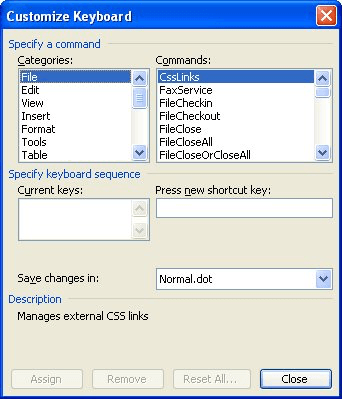Please Note: This article is written for users of the following Microsoft Word versions: 97, 2000, 2002, and 2003. If you are using a later version (Word 2007 or later), this tip may not work for you. For a version of this tip written specifically for later versions of Word, click here: Applying Numbers from the Keyboard.
Written by Allen Wyatt (last updated September 13, 2025)
This tip applies to Word 97, 2000, 2002, and 2003
Word makes it just as easy to create and destroy numbered lists as it does to work with bulleted lists. All you need to do is click on the Numbering tool to convert a paragraph to a numbered item, and click on it again to remove the number. There is no keyboard equivalent for this tool, but you can create one. This involves the use of the Customize Keyboard dialog box:

Figure 1. The Customize Keyboard dialog box.
Now, whenever you press the keystroke you chose in step 6, it is the same as clicking on the Numbering tool. Press the keystroke again, and the numbers are gone. You can also press Ctrl+Q to remove any paragraph numbering.
WordTips is your source for cost-effective Microsoft Word training. (Microsoft Word is the most popular word processing software in the world.) This tip (88) applies to Microsoft Word 97, 2000, 2002, and 2003. You can find a version of this tip for the ribbon interface of Word (Word 2007 and later) here: Applying Numbers from the Keyboard.

Do More in Less Time! An easy-to-understand guide to the more advanced features available in the Microsoft 365 version of Word. Enhance the quality of your documents and boost productivity in any field with this in-depth resource. Complete your Word-related tasks more efficiently as you unlock lesser-known tools and learn to quickly access the features you need. Check out Microsoft 365 Word For Professionals For Dummies today!
Want to assign some fancy characters to keyboard keys for characters you seldom use? There are a couple of ways you can ...
Discover MoreThe Insert key can be used for different purposes, depending on how you configure the program. This tip explains those ...
Discover MoreWhen configuring Word so that it matches your preference in shortcut keys, you need to be careful about what shortcut ...
Discover MoreFREE SERVICE: Get tips like this every week in WordTips, a free productivity newsletter. Enter your address and click "Subscribe."
There are currently no comments for this tip. (Be the first to leave your comment—just use the simple form above!)
Got a version of Word that uses the menu interface (Word 97, Word 2000, Word 2002, or Word 2003)? This site is for you! If you use a later version of Word, visit our WordTips site focusing on the ribbon interface.
Visit the WordTips channel on YouTube
FREE SERVICE: Get tips like this every week in WordTips, a free productivity newsletter. Enter your address and click "Subscribe."
Copyright © 2026 Sharon Parq Associates, Inc.
Comments